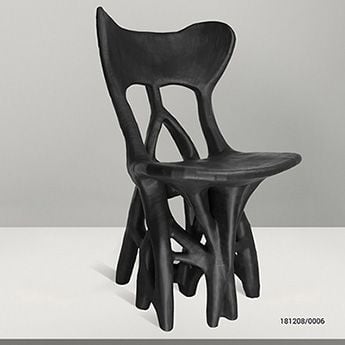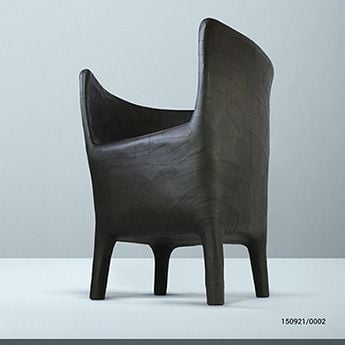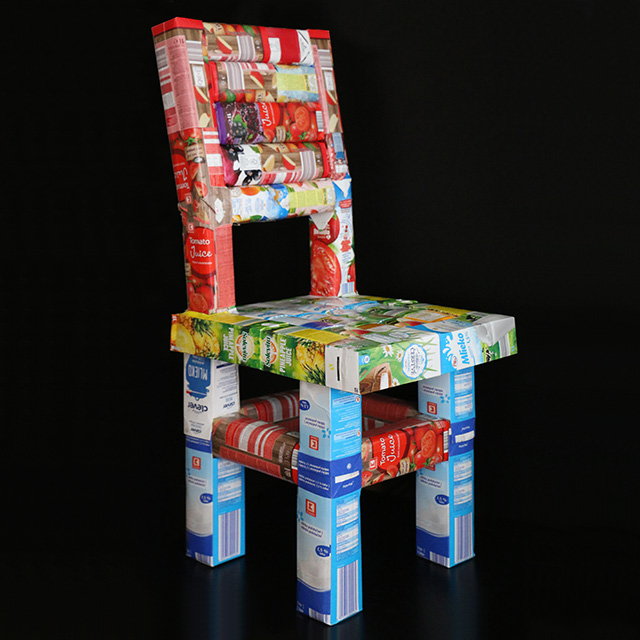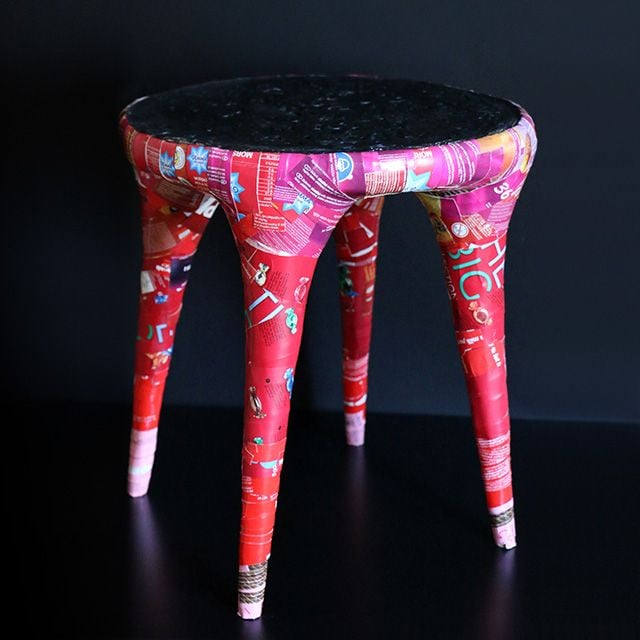Vadim Kibardin Creates High-End Furniture from Recycled Cardboard
Vadim Kibardin grew up in Omsk, Russia and graduated from the Ural State Academy of Architecture and Art’s Industrial Design Department in 1996. Now living in Prague, Czech Republic, he produces high-end furniture made from cardboard.

Dubbed “The Black Collection,” the designer’s newest series of chairs came about with multiple goals in mind. Firstly, Kibardin is passionate about sustainable design. He aims to always use materials he already has on hand, or that are otherwise readily available, to show that furniture can be made from almost anything. The cardboard he used for the Black Collection was mostly sourced from his own shop, Kibardin Design Studio, which also means that no additional transport emissions were released while gathering supplies. His other goal is to ruffle the feathers of the mainstream furniture manufacturing industry by reverting back to an era of unique, handmade pieces that stand out in terms of both functionality and personality.


On Kibardin’s website, you’ll find all the pieces that make up the Black Furniture Collection. Some are complete and ready for purchase, while others offer a design that can be made at request. Ever better, each piece is unique in the way of materials used and manufacturing approach, as the designer never uses molds to precisely replicate his pieces. Instead, his process involves forming stacks of flattened cardboard of varying thicknesses, and then shaping them into chairs. While it sounds like this might result in wobbly and questionable support, the durability of Kibardin’s designs has been widely recognized by leading museums, galleries, and competitions around the world.
In fact, the designer’s preference for paper-based furniture has become something of a signature style for him. And while he might sell many of same type of chair, you can always rest assured that your piece will be at least a little different from the rest. To further express this culmination of art and function, each chair is numbered with an authentic design signature from Kibardin himself.


Kibardin sums up his feelings on the project by explaining that “modern minimalism is a freedom from the trappings of consumer culture. It is a tool to rid yourself of life’s excess in favor of focusing on what’s important, enhancing the meaning of what we choose to retain. Shifting from the produced to the personalized with environmental concerns about the throwaway culture.”
Unlike standard product design, this type of output is characterized by artistic expression and limited production. To Kibardin, appealing to the masses and making sales are less important than sending a message of sustainability and simplification. In fact, this idea is so important to him that he launched a campaign of sorts at the start of the COVID-19 lockdown, encouraging kids and families to build their own paper furniture while they sheltered in place. Kibardin provided online patterns to spark creativity, but he also challenged the kids to create and share their own designs, too.



This “Totem” collection represents a creative artform that can be replicated in homes all around the world. Kibardin states, “Take a look at my Totem furniture collection. It is essentially a condensed version of my vision, which transcends trends by being functional as a serial product and handmade piece of art. I focus on construction and delivering key looks, without the styling and theatrics of a show. I can bring you modern solutions at affordable prices, just collect paper and cardboard packaging, download patterns and manuals, and produce it with your kids.”




